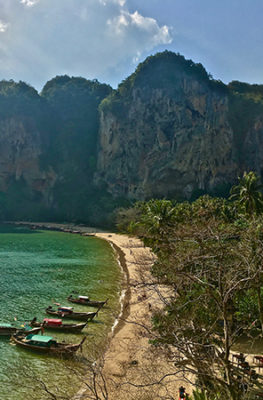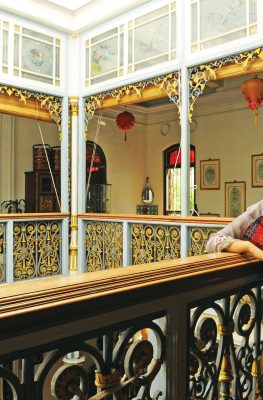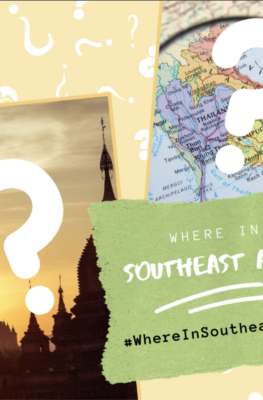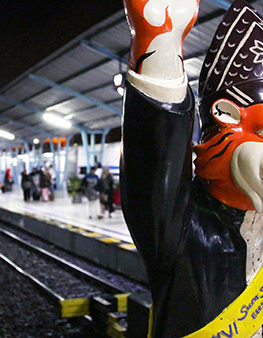Published on January 25, 2010
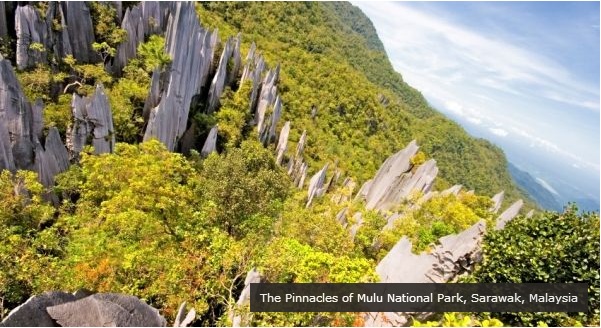
The park ranger gets word over his radio: the dominant male has been spotted. “Ladies and gentleman, we shall be moving to the car park.”
After trekking back down the path that had taken us into the forest 20 minutes earlier, our group of 25 or so tourists search expectantly up into the dense trees surrounding the car park. With his trained eyes the ranger directs us to a dark shadow, soon followed by signs of movement, as a male orangutan makes his way down to the car park below.
We watch with awe as the hairy, auburn-coloured primate proceeds to walk nonchalantly down the road to the feeding station. Having hauled his huge body up onto the wooden platform, he sits patiently, waiting for his morning fruit.
Semenggoh Nature Reserve, a 30 minute drive from the city of Kuching, has a thriving population of healthy, rehabilitated orangutans. While they spend most of their time roaming the surrounding forest freely, they frequently come back to the rehabilitation centre for a free meal – much to the delight of visitors.
Getting up close and personal with an orangutan is just one of the highlights that make a trip to Sarawak – the larger of two Malaysian states on the island of Borneo – an unforgettable experience.
With its rich rainforests, intriguing wildlife, untouched coral reefs and diverse tribal culture, the ‘Land of Hornbills’ has much to offer.
Most visitors start their journey in Kuching – the ‘Cat City’, formerly the capital of the White Rajahs of Sarawak and now a modest-sized city with a population of some 600,000, blending Chinese, Malay, Indian and indigenous races.
Small enough to walk around, Kuching has plenty to keep visitors occupied for a couple of days, including a handful of museums, historical landmarks and the picturesque waterfront area.
Aside from its own attractions, Kuching is ideally located as a base from which to explore the surrounding area.
A good place to start is the Cultural Village, situated 35 kilometres outside of the city, in the foothills of Mount Santubong. This living museum provides visitors with an authentic glimpse into the way of life of Sarawak’s seven main ethnic groups, including a recreation of the famous Iban Longhouse.
While the Cultural Village will give you an introduction, a more genuine insight into the unique community-style of living of this indigenous race requires a trip up river deep into the rainforest to the longhouse of Nanga Sumpa, located just outside the boundary of Batang Ai National Park.
Home to some 30-odd families, Nanga Sumpa is an example of an Iban community who have embraced a form of respectful, low volume tourism, which ensures they reap the benefits without being exploited.
By day you have the opportunity to interact with the Iban people as they go about their daily lives, while at night Iban men will entertain you with their traditional dance – inspired by the flight of the hornbill, the state bird of Sarawak.
To spot the state’s namesake itself, however, you need to go further afield to the spectacular unspoilt wilderness of Mulu National Park, a UNESCO World Heritage Site near Miri, and home to no less than eight species of hornbill.
While wildlife may be in abundance at Mulu (albeit sometimes difficult to spot) the real pull for this national park are the incredible caves, notably Lang Cave, with its stunning collection of stalactites and stalagmites, and Deer Cave, home to millions of bats, whose spectacular exodus can be observed at dusk.
For the more adventurous a trek to the Pinnacles, a forest of razor-sharp limestone peaks clustered 45 metres above the rainforest, is well worth the long and somewhat arduous climb. Once at the summit you can look down and marvel at the incredible karst formations below, as well as the rather daunting trek back down to where you came from.
Such adventures are what make Sarawak unique. Nearly as large as Peninsular Malaysia, yet with a population one tenth the size, Sarawak is a remote, sprawling state full of natural wonders which tourists are only just beginning to discover.
Catherine Monthienvichienchai is a Bangkok-based freelance writer and was previously editor of PATA’s official bi-monthly magazine ‘Compass’.



